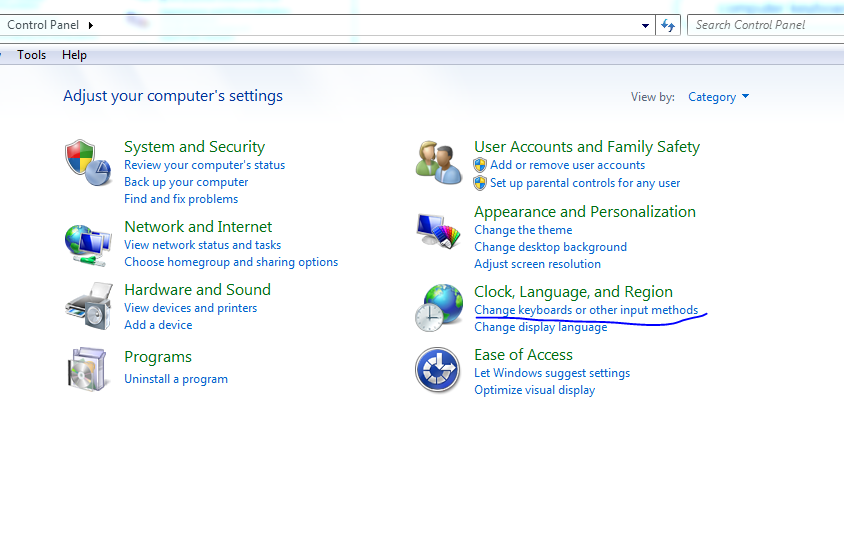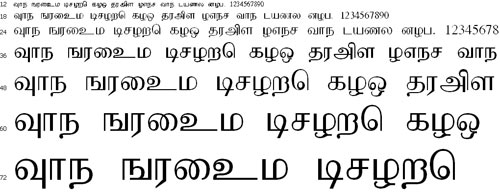Suratha Bamuni (Bamini) Keyboard Help

Keyboard © 2008 thamizha.com and Tavultesoft
Download Tamil Fonts. Baamini.TTF; Bamini.ttf. Installing and Using Tamil Fonts. If you would just like to read my Tamil pages, you need to Download Bamini.ttf font and install it in your Windows machine. Steps to be followed: Click on the link Download; You will see a dialog box - in that select 'save file to disk'. How to install Ananthabairavi in your computer? For Windows 7 / Vista users: - Right-click the Ananthabairavi font file(s) and choose 'Install'. For users of the previous Windows versions: - Copy Ananthabairavi font & pest into a default Windows font folder (usually C:WINDOWSFONTS or C:WINNTFONTS) For Mac users.
OverviewUsing this Keyboard
Keyboard Layout
Quickstart
Examples
Keyboard Details
Complete Keyboard Reference Chart
Troubleshooting
Further Resources
Related Keyboard Layouts
Bamini Tamil Font Free Install
Technical Information
Authorship
Kalaham Tamil Font
Download this documentation in PDF format.
Overview
This keyboard, usually known as the Bamini layout, is designed for the Tamil language. It is originally based on a Tamil typewriter keyboard, and is used particularly in Sri Lanka. The keyboard is designed for users who are familiar with both this layout and the Tamil script, as consonants and vowels are typed in written order, and is intended for use with a normal QWERTY (English) keyboard.
Most computers will automatically download a special font if needed to display this language correctly.
Click here to see other keyboard layouts for Tamil.

Keyboard Layout
Quickstart
This keyboard layout is largely based on the Tamil typewriter, with separate keys for consonants, vowels and vowel diacritics. Most of the characters used in Tamil are combinations of consonants and vowels, and these do not appear on the keyboard. Instead, the appropriate vowel diacritic is typed either before or after the consonant, in the same order as it would be written. Note that some diacritics will not be displayed until a consonant is typed.
For example, the standalone vowel இ is entered by typing ,, but in combination with a consonant, the ி diacritic (p key) is usually typed instead, after the consonant, and the consonant-vowel combinant will be displayed. Pressing Backspace once will delete only the vowel component, so the character displayed on the screen will change back to the consonant, and change again if a different diacritic is typed.
Grantha letters, which are used for typing Sanskrit, appear on the keyboard and are treated as normal consonants.
Examples
| Language | Phrase | Meaning | Type the following keys |
|---|---|---|---|
| Tamil | தமிழ் | Name of language | jkpo; |
Keyboard Details
The full keyboard layout consists of the eighteen consonants க ங ச ஞ ட ண த ந ப ம ய ர ல வ ழ ள ற ன, four Grantha consonants ஸ ஷ ஜ ஹ (க்ஷ and ஸ்ரீ are typed with key combinations), eleven vowels அ ஆ இ ஈ உ ஊ எ ஏ ஐ ஒ ஓ, vowel diacritics ி ீ ா ர் பெ பே பை , combinants and components சூ கூ மூ டூ ரூ ஞ று நு சு வு லு ரு ழு யு ளு னு கு பு து மு டு ணு டி டீ and the Pulli ் and Aytham ஃ marks, as well as various punctuation marks. The vowel ஔ is typed using a combination of keystrokes.
Although Tamil characters are typed using separate keys for consonants and diacritics, the characters that appear on screen will be combinants, which the computer sees as a single character. This means that while two (or more) keystrokes are required to display most consonant-vowel combinants, when you use the arrow keys to move the cursor through the text, only a single keystroke is needed to move past each character. Moving the cursor to the left of a combinant character and pressing Delete will erase the whole character, but if you move the cursor to the right of a combinant and press Backspace, only the vowel component will be erased. This is the case whether the vowel component appears to the left or right of, above or below the consonant.
Vowels and Pulli Marks
In general, characters should be entered with this keyboard in the same order as they would be written on paper. When a vowel or part of a vowel appears before a consonant, it should be typed first. When the vowel component appears above, below or to the right of a consonant, it should be typed after the consonant. The vowel diacritics பெ (n), பே (N) and பை (i) will not be displayed until a consonant is typed (in the preceding examples the consonant ப is shown). The first vowel அ is implicit in the consonants, so typing this vowel after a consonant will display this as a standalone vowel, and not combine it with the consonant.
Long vowel characters are typed either by a combination of [S*] the basic vowel key, or by pressing the vowel key twice.
Because the consonants contain the implicit vowel அ, to produce a pure consonant it is necessary to add the Pulli mark ் by typing a semicolon ; immediately after the consonant. Any vowel diacritic that is typed immediately after typing the Pulli mark will not be combined with the consonant. However, because this keyboard acts in a similar way to a typewriter, it is possible to type a preceding vowel diacritic followed by a consonant and the Pulli mark, or even a standalone vowel followed by the Pulli mark, producing odd combinations such as மெ் or அ். In every case, a consonant-Pulli mark combinant behaves the same way as a consonant-vowel combinant when you use the arrow, Backspace and Delete keys.
The SRii Character
This character is entered by typing ];uP. Currently, some browsers do not display this character correctly. Click here if you are having difficulty entering this character.
Keystroke Examples
Note: for a complete table of characters and keystrokes, click here.
The following table gives specific examples of how to input characters based on the consonant க. The Grantha consonants, which are entered with [S*] key combinations, use the same input method. Examples of these with the consonant ஜ are also given below.
| Tamil Consonants | Grantha Consonants | ||||||
| Consonant | Vowel/Pulli | Combinant | Keystrokes | Consonant | Vowel/Pulli | Combinant | Keystrokes |
| க | ் | க் | f; | ஜ | ் | ஜ் | [[; |
| அ | க | f | அ | ஜ | [[ | ||
| ஆ | கா | fh | ஆ | ஜா | [[h | ||
| இ | கி | fp | இ | ஜி | [[p | ||
| ஈ | கீ | fP | ஈ | ஜீ | [[P | ||
| உ | கு | F | உ | ஜு | |||
| ஊ | கூ | $ | ஊ | ஜூ | |||
| எ | கெ | nf | எ | ஜெ | n[[ | ||
| ஏ | கே | Nf | ஏ | ஜே | N[[ | ||
| ஐ | கை | if | ஐ | ஜை | i[[ | ||
| ஒ | கொ | nfh | ஒ | ஜொ | n[[h | ||
| ஓ | கோ | Nfh | ஓ | ஜோ | N[[h | ||
| ஔ | கௌ | nfs | ஔ | ஜௌ | n[[s | ||
For a complete table of characters and keystrokes, click here.
Troubleshooting
Using Tamil keyboards with Word 2007
Sometimes when using Word 2007, the Pulli mark ் is not suppressed correctly. For example:
| Key sequence | Correct output | Word output |
| க + அ + க | கக | க்க |
| க + க + க+ க | க்கக்க | க்க்க்க |
The easiest ways to deal with this are to move the cursor and press Backspace to delete the unwanted Pulli mark, or else enable the Text Services Framework Add-In if you are using Keyman Desktop Professional. Disabling Tamil language editing in Microsoft Office Language Settings will also correct the input behaviour, but this is not recommended, as it makes selection of fonts more difficult.
Fonts
Some of the fonts included with Windows do not include all the Tamil characters that are available with this keyboard. In order to display every character correctly, we recommend you download and install Tamil fonts.
If the characters you type or those on the On Screen Keyboard do not appear to display correctly, please read the KeymanWeb troubleshooting guide.
Problem Solving
If the preceding consonant does not change to a vowel-consonant combinant character when you type a vowel, confirm that you have not typed a Pulli mark ், which identifies the consonant as a pure consonant, or the first vowel அ, which identifies the consonant as the implicit-vowel consonant. Typing either of these after a consonant will prevent that consonant from changing to a combinant character.
Further Resources
Related Keyboard Layouts
Other Keyboard Layouts for the Tamil language:
Tamil99
Anjal Paangu
ISIS Tamil
Inscript Tamil
Modular (Visual Media)
Typewriter (Visual Media)
Other Internet Resources
Tamil Writing System at Omniglot.com
Tamil Language at Wikipedia.org
Tamil Script at Wikipedia.org
Technical Information
System Requirements
It is recommended that you use an English QWERTY hardware keyboard with this keyboard.
Unicode Version
This keyboard complies with Unicode 5.2
Authorship
This keyboard was created by Suratha Yarl Vaanan (suratha@hotmail.com), Mugunth (mugunth@gmail.com) and Umar (csd_one@yahoo.com). For more information about keyboards produced by these developers, see http://thamizha.com. Tavultesoft gratefully acknowledges the contribution made by the authors in developing this keyboard and making it freely available for use with Keyman Desktop and KeymanWeb. Their effort assists in enabling people to communicate in their own language. To contact the authors of this keyboard, click here .
Copyright and Terms of Use
The Thamizha Bamuni Keyboard for Keyman Desktop and KeymanWeb is Copyright 2008 thamizha.com and Tavultesoft. It may be freely distributed for non-commercial use, but may not be modified or adapted in any way without permission from the authors.
All Documentation Versions
In this article, I have shared the Senthamil font download link for Windows 7,8, and 10. Do you know? Senthamil font includes 286 font styles.
Senthamil font download
To download the Senthamil 286+ fonts, click the below download button. The download will be started automatically.
Installation Guide:
- Extract the zip file
- Locate senthamil.ttf file
- Double click the font file and hit the install button
That’s it. You’ve successfully installed the font on your computer. It is a non-Unicode font. You can convert Unicode to non-Unicode font using online converters.
Read also:-
How to use Senthamil font on Windows OS?

To use Senthamil font on Windows OS, Install the “azaghi+” software on your computer. I suggest azhagi+ instead of keyman software.
Note:- If you are installing the Tamil font on your computer to only type in MS Word then I will suggest Google Input Tools Tamil offline installer. If you want to use Tamil in Photoshop then only you need to install Tamil font on your computer.
To type this font easily refer to the below keyboard layout or keyboard image or character map. For example, If you want to type “Tamil” then you have to type “jkpo”.
The font package includes the help file. You can check that to type the Tamil font on your computer easily.
Frequently Asked Questions
How to type senthamil font in photoshop?To type Tamil font in photoshop, you have to convert Non-Unicode font into Unicode font. Once you have converted font simply copy and paste the Unicode to photoshop.
Which is best Tamil font to type?Actually, Bamini is the best Tamil font according to my research because there are a lot of resources available for Bamini.
Final Words
I hope this article helps you. If you face any issues while installing the font on your computer please let me know via comments. Sharing is caring! Share this article with others via social networks.
